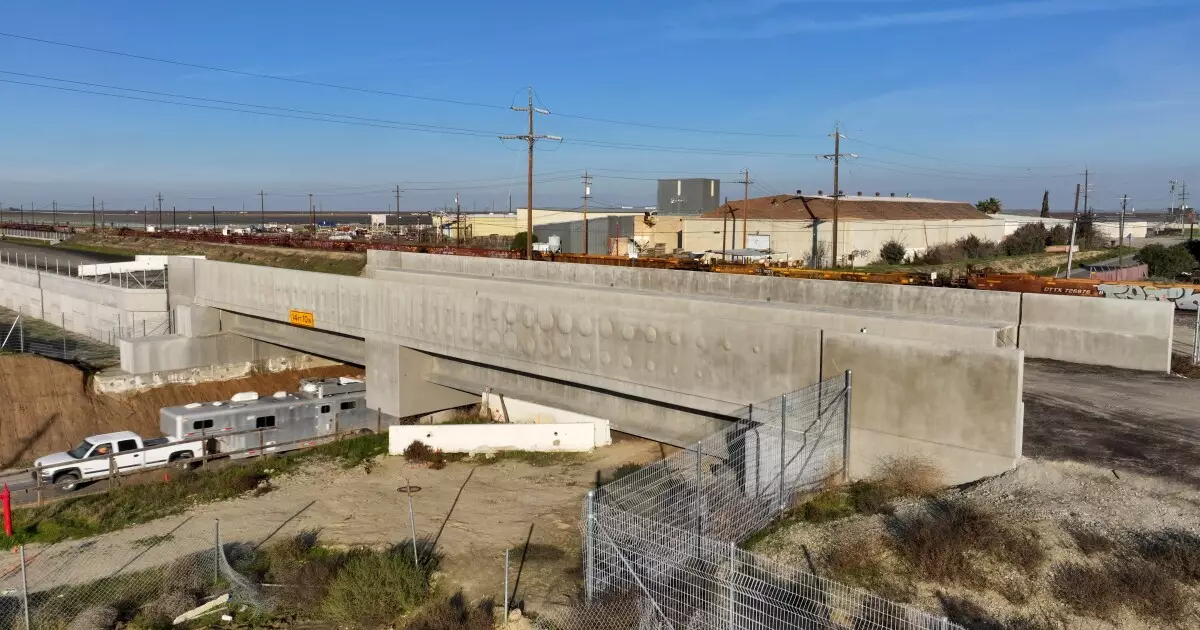The California High-Speed Rail project has long been a point of contention, drawing both federal scrutiny and public skepticism. As the Trump administration announces plans to investigate the California High-Speed Rail Authority (CHSRA) regarding its compliance with federal funding agreements, the implications of this inquiry extend far beyond mere accountability. This article examines the complexities surrounding the project’s financing, its tumultuous history, and the potential ramifications of the administration’s probe.
In 2008, California voters approved a $10 billion bond measure to kickstart the ambitious bullet train initiative. The original cost projections estimated a total investment of $33 billion, with hopes for completion by 2020. Fast forward to the present: costs have soared to an astounding $128 billion, a staggering deviation from early estimates that raises legitimate concerns about fiscal responsibility and governance. The CHSRA has reported spending $15.7 billion to date, but discrepancies remain, with the federal Department of Transportation citing expenditures of approximately $13 billion.
Secretary of Transportation Sean Duffy has emphasized that the federal government cannot continue funding projects that exhibit a lack of accountability. Previous administrations have grappled with awarding large sums to the project, and with mounting financial pressures, it is uncertain whether California will receive the further $8 billion it claims is necessary to complete the first segment of the train line. The pressing question is whether the CHSRA can justify these expenses and the trail of federal funds that have been invested to date.
The investigation stems not only from fiscal concerns but also significant political pressures. Senate Republicans have long criticized the California project, branding it emblematic of government inefficiency. A letter from California GOP lawmakers to President Trump prior to this announcement played a pivotal role in rekindling scrutiny. They cited a warning from the CHSRA’s inspector general that indicated a substantial $6.5 billion funding gap for the initial segment of the railway, casting doubt on the viability of meeting the 2033 completion deadline.
At a Los Angeles press conference, Duffy highlighted the growing frustration among taxpayers, referring to protests where individuals demanded progress on the rail project. Rather than dismissing these grievances, he pointed fingers at the modality of decision-making, questioning where exactly the funds have been allocated and why tangible progress has not been made in nearly two decades. The pressing need to satisfy constituents’ demands for efficient and functional infrastructure adds complexity to both the investigation and the future of the rail project.
In response to the growing criticism, the CHSRA has maintained that the investigation is welcome. Ian Choudri, CEO of the CHSRA, asserted that numerous independent audits have validated their spending and project goals. The authority reported that the project has generated $22 billion in economic impact, primarily benefiting California’s Central Valley. This assertion aims to counteract criticisms of inefficiency by highlighting the project’s potential economic benefits, which could offset its initial funding overruns.
Emphasizing transparency and compliance, Choudri insists that every dollar is accounted for and that the CHSRA is committed to following through on its obligations. However, skepticism looms large. If independent audits can account for each dollar spent, the next logical question arises: Is the project truly on track, and can it deliver the promised results for a struggling state?
As the investigation unfolds, several critical questions linger about the future of California’s bullet train project. Is it possible to salvage a project that has already faced seemingly insurmountable obstacles? With an ongoing shortfall estimated at up to $99 billion, can federal and state authorities come together to address these challenges, lest the ambitions of high-speed rail become a cautionary tale of mismanaged public funds?
The casting of an investigative net by the Trump administration serves dual purposes: it aims to hold the CHSRA accountable for fiscal responsibilities and appease political pressures that demand transparency. Importantly, this inquiry sheds light on the broader implications of public accountability in government-funded projects. As California moves ahead, the decisions made today regarding the rail project’s future may create lasting impacts on how such megaprojects are financed, monitored, and ultimately realized. In this high-stakes environment, every step taken—whether toward constructing new infrastructure or investigating past errors—will reverberate throughout the political and economic landscape for years to come.

